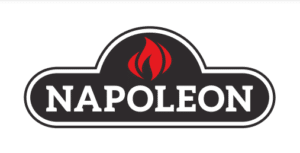Your fireplace should be a comforting feature of your home, not a stressful or unsafe one. Each type of fireplace– gas, wood, or electric– has its own signs that it needs professional attention.
When you catch problems early, you can rest easy knowing your fireplace is safe and working its best. Below, we’ll break down the warning signs to watch for based on your type of fireplace. If something doesn’t feel right with your fireplace, it might be time to call the pros.
Signs Your Gas Fireplace Needs Professional Servicing
Gas fireplaces are known for being easy to use and low-maintenance, but they still need regular checkups. If you notice any of the signs below, it’s probably time to call in a professional for an inspection or repair.
Pilot Light Won’t Stay Lit
Your gas fireplace’s pilot light should stay on once it’s lit. If it keeps going out, it could be due to a few different issues.
Potential Causes:
- Faulty thermocouple
- Poor gas flow
- Other mechanical issues
This deceptively small issue could point to something more serious. Don’t ignore it. When your pilot light won’t stay on, it’s best to have a technician take a look. They can figure out what’s going on and fix it safely.
Unusual Smell (Sulfur or Gas Odor)
You shouldn’t smell anything unusual coming from a gas fireplace. If you notice a sulfur-like or rotten egg smell, it could mean there’s a gas leak–a serious safety concern. Turn off the fireplace right away, leave the area, and call a professional immediately. A certified technician can safely inspect the unit and fix any leaks or damaged components.
Black Soot or Discoloration on Glass
Gas fireplaces are designed to burn clean, so you shouldn’t see black soot or buildup on the glass or logs. If you do, it can affect your entire home.
Potential Causes:
- Burner not working properly
- Ventilation issue.
This type of buildup also affects your indoor air quality. A professional cleaning and inspection can fix the problem and keep your fireplace looking and working like it should.
Strange Noises (Hissing or Whistling)
While a soft whoosh is normal when the flame starts, loud or persistent hissing, whistling, or other odd noises are not.
Potential Causes:
- Gas pressure problems
- Airflow issues
- Loose components
If your fireplace is making unusual noises, have it checked out by a technician. Fixing it early can prevent more serious damage down the road.
Fireplace Turns On and Off Randomly
Your gas fireplace should not turn on or off by itself.
Potential Causes:
- A faulty thermostat
- Wiring problem
- Glitch in the control module
A professional can test the system and find out what’s causing the problem.

Signs Your Wood Fireplace Needs Professional Servicing
Wood-burning fireplaces are cozy and classic. However, they come with more upkeep than other types. If you use yours regularly, it’s important to watch for warning signs that it needs attention. Below are some common issues that mean it’s time to call a fireplace or chimney professional.
Excessive Creosote Buildup in Chimney
Creosote is a dark, sticky substance that builds up in your chimney over time. It forms when smoke cools and condenses, especially if you burn wet or unseasoned wood. Too much creosote is a major fire hazard. It can catch fire inside your chimney, leading to serious damage or danger. If you see thick black deposits or haven’t had a chimney cleaning in a while, it’s time to schedule one.
Smoke Entering the Room Instead of Going Up the Chimney
Your fireplace should pull smoke up the chimney, not push it into your living space. If smoke is drifting into the room, something’s not working the way it should.
Potential Causes:
- Blocked chimney or flue
- Broken or closed damper
- Poor draft or air pressure issues
Using the fireplace in this condition can be dangerous. Stop using it and call a professional to find and fix the problem.
Cracks or Damage in the Fireplace or Chimney
Over time, the bricks and mortar in your firebox or chimney can crack or crumble. This kind of damage can let heat escape to areas it shouldn’t, which can increase fire risk.
Potential Causes:
- Freeze/thaw cycles from weather
- Long-term exposure to moisture
- Heat damage over time
If you see any visible cracks or notice pieces breaking off, it’s a sign your fireplace needs repair. A technician can check how serious the damage is and recommend the right fix.
Difficulty Starting or Maintaining a Fire
If your fire keeps going out or won’t start at all, it might be more than just wet wood.
Potential Causes:
- Clogged flue or chimney
- Damaged or stuck damper
- Wet, unseasoned, or low-quality wood
Also, a fireplace needs good airflow to burn properly. If something’s interfering with that, you may need a professional to inspect the system and get things flowing again.
Water Damage or Chimney Leaks
Water and chimneys don’t mix. If you notice rust on the damper, stains on the wall, or damp smells, there may be a leak in your chimney system.
Potential Causes:
- Cracked chimney crown or masonry
- Missing or damaged chimney cap
- Faulty flashing around the chimney
Over time, moisture can also cause serious damage to the structure and even lead to mold. A professional can spot the source of the leak and recommend waterproofing or repairs to keep things dry.

Signs Your Electric Fireplace Needs Professional Servicing
Electric fireplaces are known for being low-maintenance, but they’re still appliances. That means things can go wrong. Most problems are electrical or mechanical and should be looked at by a pro. Here are the top signs your electric fireplace might need a repair.
Fireplace Won’t Turn On or Keeps Shutting Off
Does your electric fireplace not power on or shut off randomly?
Potential Causes:
- Blown fuse or tripped breaker
- Loose or damaged wiring
- Faulty control board or thermostat
Sometimes, a reset might help, but if the problem keeps happening, it’s best to have it checked out. A professional can safely test the unit and make sure everything’s working like it should.
Burning Smell or Overheating
Electric fireplaces should never give off a burning smell. If they do, it could be from dust burning off. It could also be something more serious like overheating or a motor issue. This is a fire hazard, so it’s important to unplug the unit right away and contact a certified technician.
Unusual Noises (Buzzing, Clicking, or Rattling)
Electric fireplaces are usually quiet. So if yours starts making buzzing, clicking, or rattling noises, something may be loose or worn out.
Potential Causes:
- Loose screws or internal components
- Worn-out fan or blower motor
- Obstruction in the heating element
These noises might start small but can lead to bigger issues if left alone. A quick inspection by a pro can prevent the need for bigger repairs later.
Display or Heating Element Malfunctions
If the flame display looks off or the fireplace isn’t producing heat, the heating element or circuit board might be to blame. While some units come with basic troubleshooting tips, dealing with electric parts is best left to the pros. A technician can replace faulty components and get your fireplace running smoothly again.
Dust or Soot Buildup on Heating Components
Dust buildup on the heating element or vents can block airflow and cause overheating. While light dusting is okay, heavy buildup should be handled carefully. If your unit keeps getting dirty fast or smells like it’s burning dust, it might need a deeper clean. A professional can clean it safely and check for any deeper issues.
Need Fireplace Maintenance? Contact Fireplace Solutions Today!
No matter the type, your fireplace should always be safe, reliable, and ready to use.
If you’ve noticed any of the signs above, have a professional take a look. Fireplace Solutions is here to help with expert service, same-day appointments, and technicians you can trust.
Contact Fireplace Solutions for expert fireplace repair and maintenance today. Schedule online or give us a call. We’re ready when you are!

